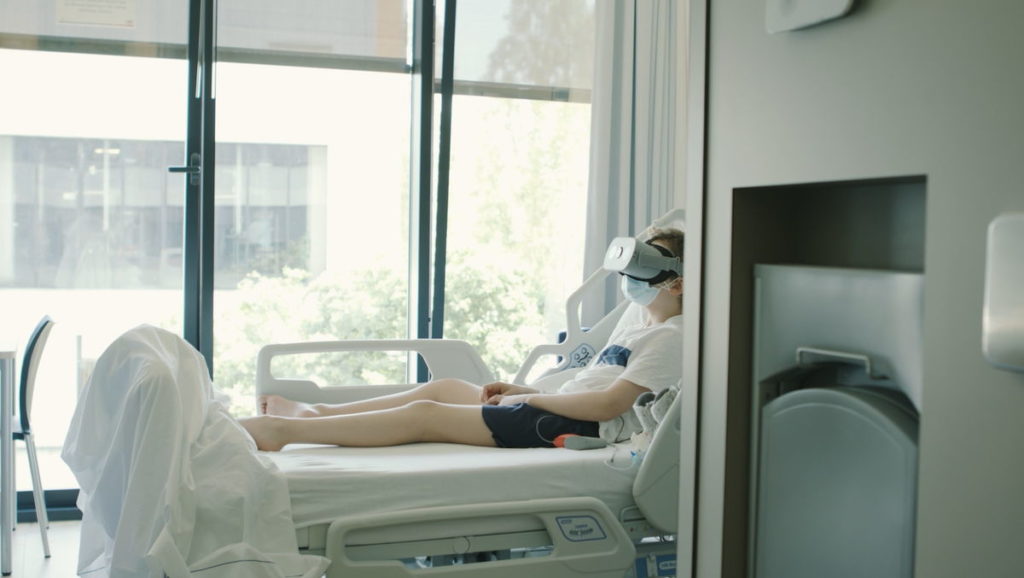The University Hospital in Antwerp (UZA) is testing a pilot project using VR goggles and robots to transport young long-term patients to their homes or classrooms.
As part of the initiative, set up together with telecom operator Telenet, images from, for example, their home living room can be projected through the VR goggles via a 5G connection, making children feel as if they are virtually present.
"A long stay in hospital is often a heavy burden for patient and family," said Paul Van Aken, director of patient care at the UZA, in a press release.
"The past year hit particularly hard due to the coronavirus crisis. Virtual Reality and 5G technology can alleviate this problem and create a 'real' contact between the hospital and the home or classroom environment," he added.
The VR system also adds value compared to the classic video call via a smartphone, Van Aken explained, adding that "by putting on the glasses, the patient is back home for a short while."
In the last weeks, various tests with the system have already taken place, which the initiators of the project have said were a success.
"It is very nice to feel at home for a while because in the hospital everything is often the same. With the VR glasses, it's just like I'm at home," Cédric Van Den Bogaerde, a 13-year-old patient, who tested the VR system, said.
VR-bril, robot en 5G halen kinderen die langdurig in ziekenhuis verblijven virtueel naar huis from Telenet Press on Vimeo.
As part of the project, a VR robot developed by the Dutch company Horus VR, "VRiendje", equipped with a 360-degree camera, microphones, speakers and an internet connection, is placed in a room where the young patient would like to be.
It is then connected to VR glasses worn by the child in the hospital, and by moving the head about, the patient can look around the room where the robot is standing, allowing them to see what is going on there and to speak via the microphone to the people present.
For the time being this is a pilot project, but the initiators hope that in the long term, similar applications can be rolled out elsewhere. However, a fast 5G connection - provided by Telenet for the pilot project - is necessary to fully exploit the potential of VR, meaning a broader rollout will depend on coverage in Belgium.
"5G is twenty to thirty times faster than the current 4G network. Not only can the images be transmitted faster, but the quality also remains optimal. This also makes it a good example of how 5G can be used more and more in the future," said Piet Spiessens, 5G innovation manager at Telenet.

